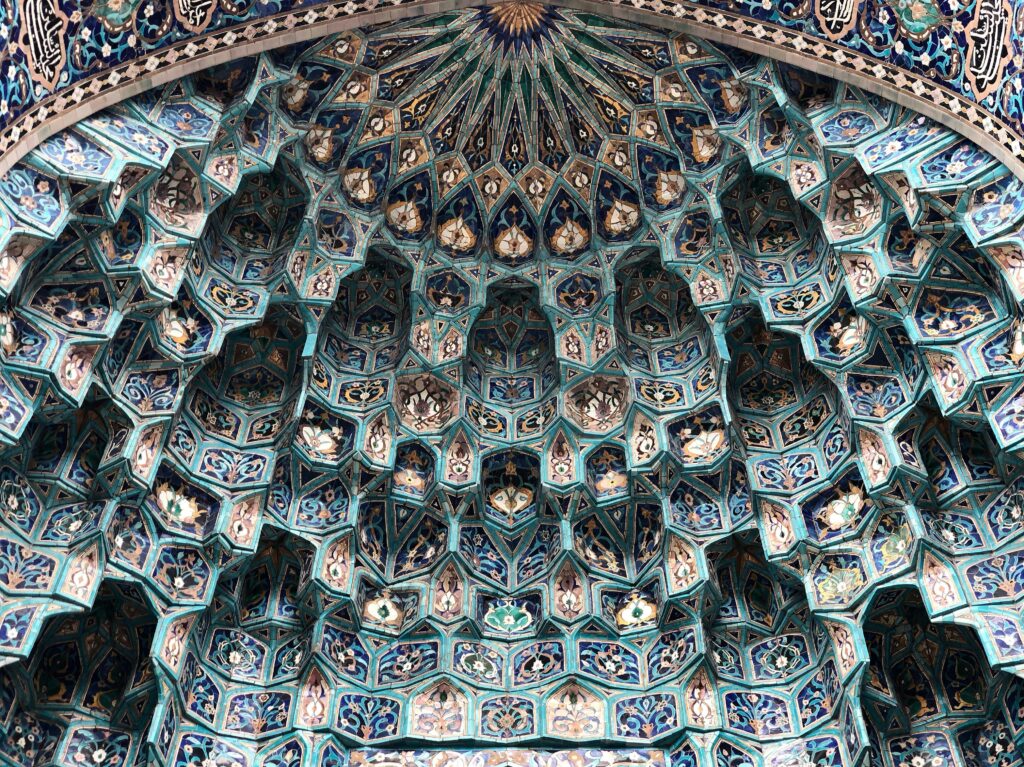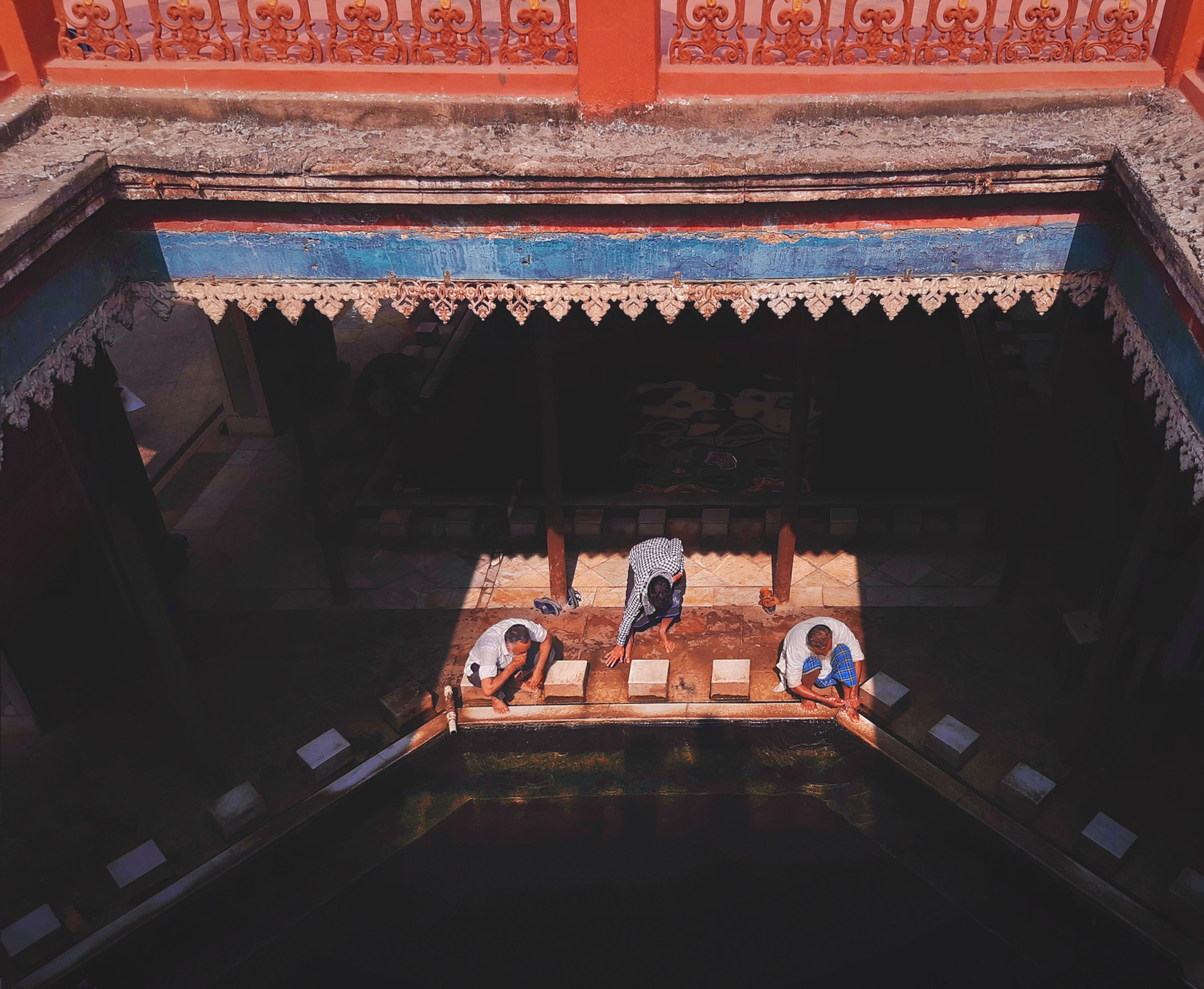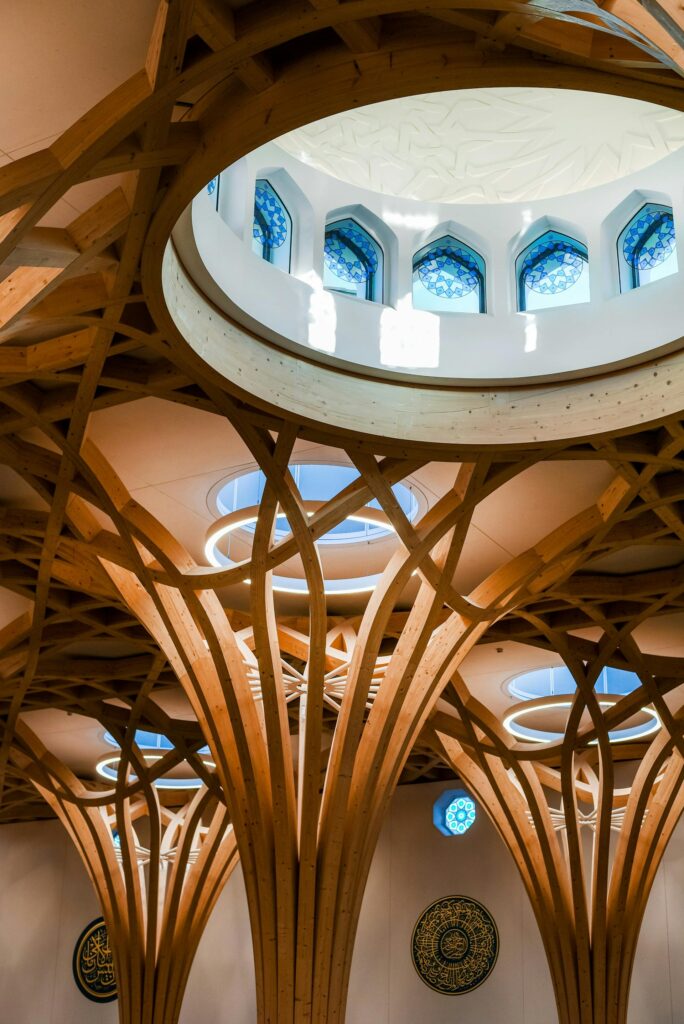Buried within the Lut Desert, the city of Kerman nests a 700-year-old oasis. Made of cooling marble and brick, the Jameh Masjid of Kerman in Iran portrays floral designs in its intricate tilework and painted white vines beneath rich and elegant calligraphy. The Jameh Masjid is one of the thousands of Masjids worldwide that integrates natural elements within its construction. Islamic architecture, as a whole, purposefully encompasses Allah’s creation, urban design and religious values.
Geometric Elegance and Aniconism: A Spiritual Tapestry
Geometric designs are a strong focal point in Islamic architecture. The geometric elements, at its core, are inspired by inherent occurrences within flora and fauna. The rise in popularity of these elements stemmed from the idea of aniconism in Islam– the prohibition of images of humans or animals. This stems from the belief that human attempts to replicate Allah’s intricate living creations are wrong. Some illustrations of humans were added to Islamic manuscripts, given that the images were drawn to support the text and not stand alone from it.

At its core, architects implemented the geometric designs not to copy nature, but to reflect its intricacies and build an appreciation for the natural world, even if direct motifs were not visible. Praised by some as Islam’s ‘universal language,’ the designs incorporate elements of cosmology, philosophy and order.
Reflection of the cosmos is further achieved by Muqarnas, a distinctive feature of Islamic architecture. The style is defined by its honeycomb vaulting and stalactite appearance, both aspects found in nature. The microcosm reflects the macrocosm, urging viewers to look above themselves both literally and figuratively. The mathematical precision of the Muqarnas design embodies cosmological precision and the wonder of Allah’s vast creation, even within the indoor confines of a masjid.
The Natural Essence of Masjids Worldwide
Flora, fauna and cosmology are core elements of Masjids worldwide through natural implementation. Sunlight, as a natural source of light, enables places of deep reflection to invite the outside world in. Sahn, or courtyards most often found in masjids, are a classic and timeless way to ensure natural light flows through space. Large windows and doors allow wind to flow naturally, creating energy-efficient conditions. This can be found in unique varieties of architecture within the Islamic world, such as the Sultan of Ternate Mosque. Courtyards also supplement low humidity levels and high wind velocity.
Water: Symbolism and Purity in Islamic Architecture
Water carries meaning within Islam, symbolizing purity. Without wudhu, or the ritual cleaning of oneself with water before prayers, the prayers are invalidated. Symbolically, water is brought up in hadiths as a metaphor for the importance of prayer:
Abu Huraira reported: The Messenger of Allah, peace and blessings be upon him, said, “If there was a river at your door and he took a bath in it five times a day, would you notice any dirt on him?” They said, “Not a trace of dirt would be left.” The Prophet said, “That is the parable of the five prayers by which Allah removes sins.”
Source: Ṣaḥīḥ al-Bukhārī 528, Ṣaḥīḥ Muslim 667
Allah’s benevolence is also mentioned fervently in relation to miracles sent down by him through the mention of rivers, seas, fountains, springs, rain, hail and clouds.
وَٱللَّهُ أَنزَلَ مِنَ ٱلسَّمَآءِ مَآءًۭ فَأَحْيَا بِهِ ٱلْأَرْضَ بَعْدَ مَوْتِهَآ ۚ إِنَّ فِى ذَٰلِكَ لَـَٔايَةًۭ لِّقَوْمٍۢ يَسْمَعُونَ ٦٥
And Allah sends down rain from the sky, giving life to the earth after its death. Surely in this is a sign for those who listen.
(Quran, 16:65)
Thus, it seems obvious to portray water within and throughout masjids. Many of the aforementioned sahn have flowing water for wudhu stations.

Masjids as Beacons of Sustainable Design

As masjids around the world continue to stand as symbols of faith and community, they also serve as beacons of sustainable design and environmental stewardship. The Cambridge Central Mosque embodies these core ideals. Incorporating modern aesthetics with locally generated energy, the masjid is one of many created with sustainability in mind. Masjids like the one in Cambridge serve the environment and the community simultaneously through methods like water irrigation, photovoltaic cells, and prioritization of green transport to serve the ideals of modern-day worship.
The timeless principles of Islamic architecture offer valuable lessons in harmonizing human structures with the natural environment, reminding us of our responsibility to protect and cherish the world around us.



